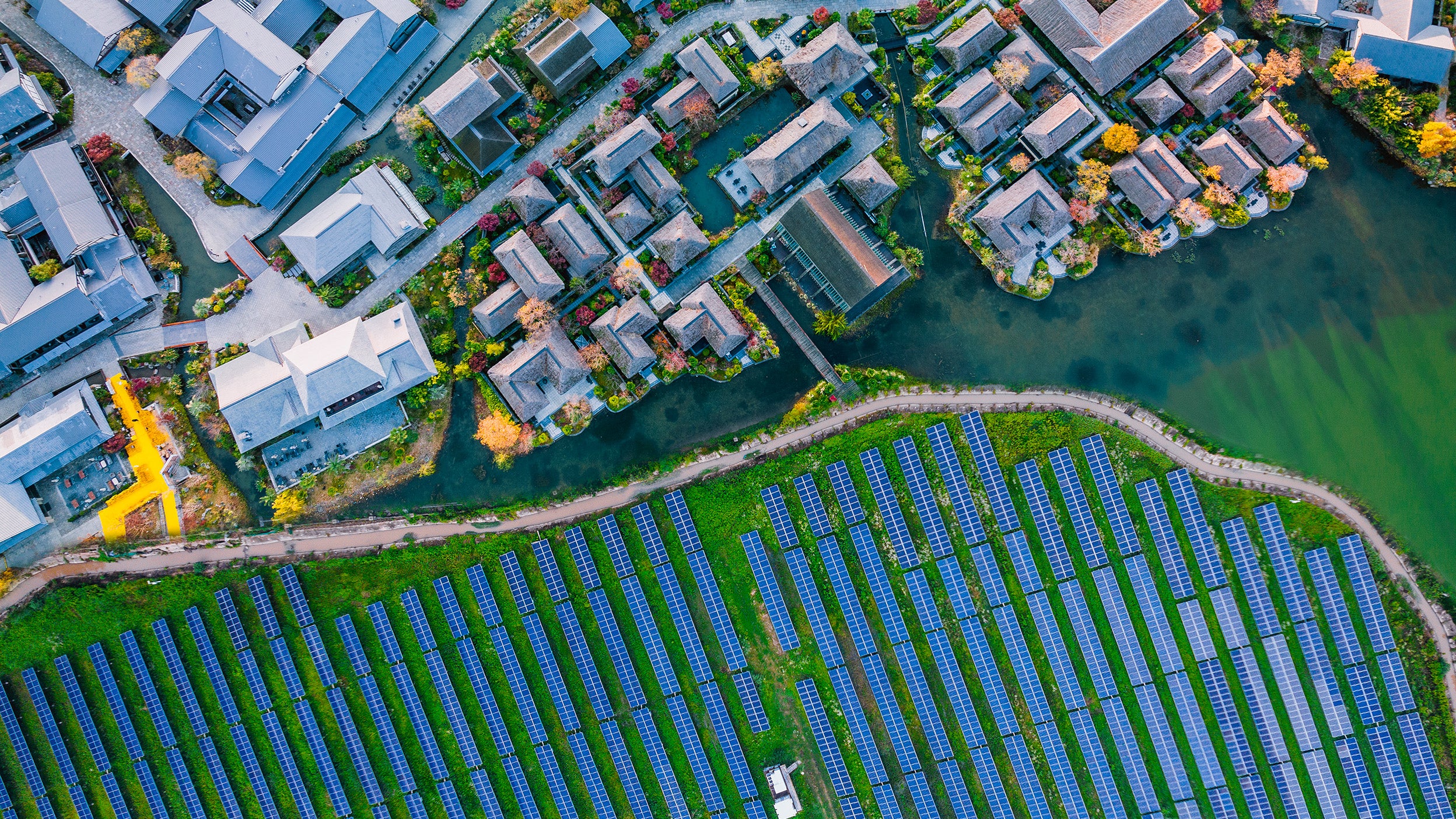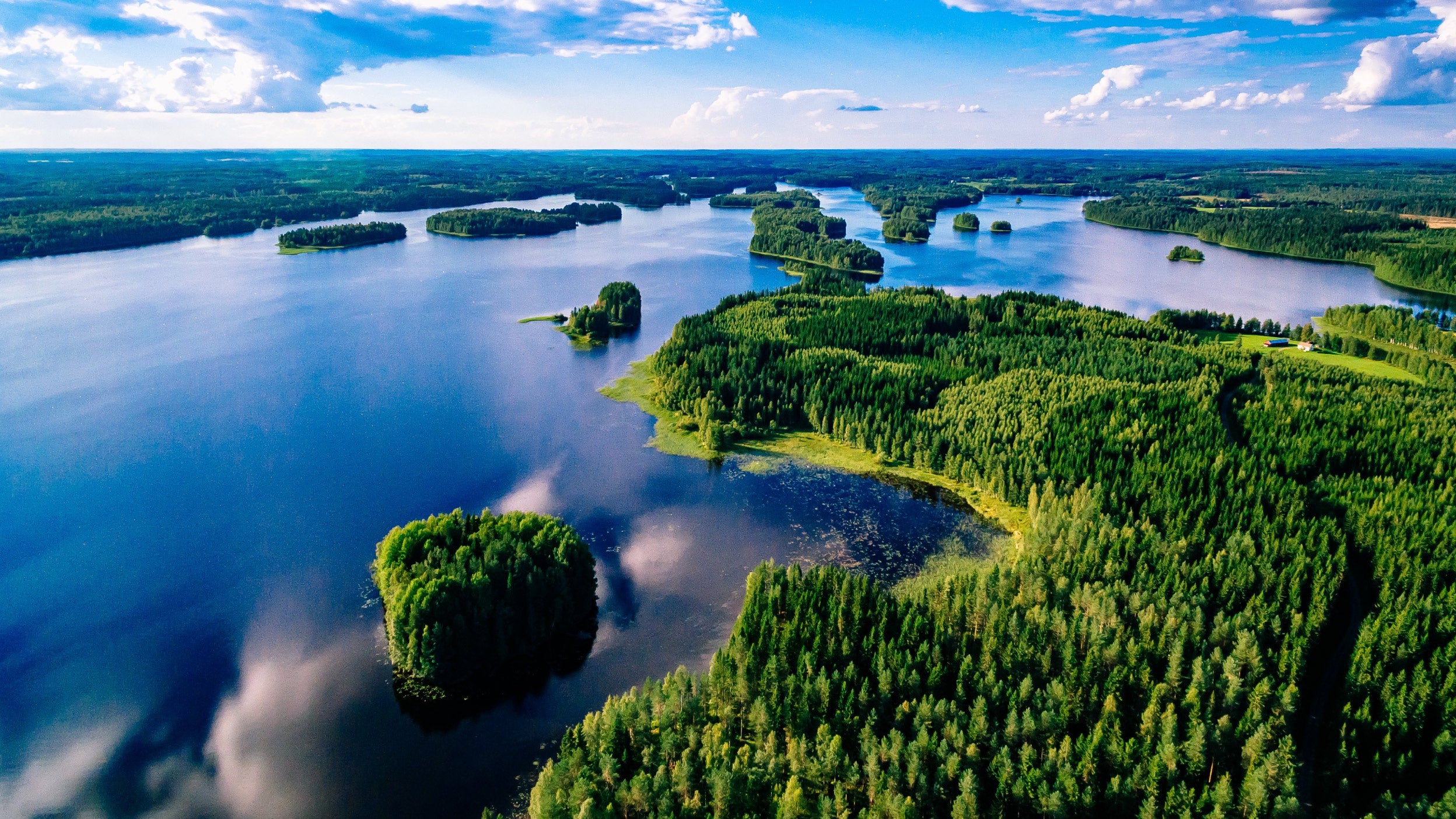
2024 UK Stewardship Code Report
The Invesco 2024 UK Stewardship Code Report is out. In this year’s report, we detail our commitment to sound stewardship and sustainable investing.
Climate change will challenge and change the way we live
Poorest countries in Africa are likely to be the hardest hit
Investment in mitigation and adaptation strategies needed
Judging by global temperature rises over the years, it’s clear climate change will challenge the way we live. To address these risks, investment in mitigation and adaptation strategies is imperative.
In July 2023, United Nations (UN) Secretary General Antonio Guterres said: “The era of global warming has ended; the era of global boiling has arrived.”
His comments were in reaction to news that July was the hottest month on record. The European Union’s Copernicus Climate Change Service reported the global average surface air temperature for July 2023 was 16.95°C. This was the highest for any month since detailed records began in 1940.
What was symbolic about it was that this was 1.5°C warmer than the estimated 1850-1900 average July temperature. The Paris Agreement aims to limit the rise in temperature since 1850-1900 to 1.5°C.
The news has hardly improved since then, with the Copernicus Climate Change Service reporting that March 2024 was hotter than any previous March in data record. This was also the tenth month in a row to be the warmest on record. However, El Nino may be providing a temporary boost that is exaggerating the trend over recent months.
Unfortunately, future climate change is probably baked-in to some extent, since my models suggests that temperature change is related to CO2 emissions over at least the previous 100 years.
Based on UN population estimates, my assumptions about future income growth and the assumption that technological innovation (judged by the pace of reduction of CO2 emissions per unit of GDP) will continue at the recent pace. My model suggests a temperature change of 3.9°C by the end of the century versus the 1850-1900 average. This is displayed in “Recent trends” in Figure 1.
Source: NOAA, Our World in Data, UK Meteorological Office, United Nations, World Bank, LSEG Datastream and Invesco Global Market Strategy Office1
That sort of temperature change would likely have a dramatic effect upon weather patterns. Previous UN reports suggest that such temperature changes could bring large increases in climate related deaths and migration flows that could run into the hundreds of millions.
Some regions such as low-lying coastal areas will simply become uninhabitable. To imagine the wide-ranging potential effects, consider that most financial centres like New York, London, Tokyo and Hong Kong are in coastal areas.
As examples of the implications of temperature gains of 2-4°C, the Stern Review (2006) estimated that extreme weather events could cost up to 0.5%-1.0% of annual global GDP, up from 0.1% in 2005. A permanent GDP loss of 3% could be possible if temperatures rise by 2-3°C and if they exceed 5% the loss could be up to 10%.
However, it doesn’t have to be that bad. Large investments are already being made to mitigate climate change. For example, more than 40% of electricity in Germany and the UK comes from renewable sources.
Technology will be key, and Figure 2 shows one way of looking at how rapidly things are evolving. If we are to reduce CO2 emissions while allowing for incomes and population to rise, we need to reduce the CO2 intensity of economic activity.
This has been happening, but a continuation of recent trends leads to the 3.9°C temperature change prediction. We need to accelerate technological innovation, to “bend downwards” those CO2 intensity curves.
The optimistic scenario in Figure 1 effectively assumes a doubling of the rate of decline in CO2 intensity and reduces the projected temperature change by 2100 to 3.2°C (versus the 1850-1900 average).
That is still not great but, importantly, it gives the hope that changes beyond 2100 would be more dramatic versus the “recent trends” path. Remember, what we do today will not have its full effect for around 100 years.
Source: World Bank, LSEG Datastream and Invesco Global Market Strategy Office2
It is easy on paper to assume a doubling of the rate of technological innovation but far more difficult to achieve. It will require big investments in R&D and is likely to require a lot of pump-priming from governments. We don’t find it easy to spend money today for the benefit of our great-great-grandchildren.
The key areas of innovation in the near future will include advances in battery technology and energy storage. Other innovations will be around harnessing marine energy sources or using hydrogen as a source of fuel. Progress in agricultural technologies will reduce methane emissions, while development is gathering pace in manufacturing electric planes, and solar powered air conditioning.
Unfortunately, climate change is already happening and will get worse. The effects are unlikely to be evenly spread. For example, temperature change will be greatest closest to the poles but those areas close to the equator are already dealing with high temperatures and any increase could be critical.
Also, much of the population that lives in the tropics is poor and those on low incomes are expected to struggle the most. So, poorer countries will often suffer the worst consequences of climate change. There’ll be flooding in some places, drought in others, unliveable temperatures, water and food shortages and these areas are the least able to protect themselves.
Africa exemplifies the problem, with Figure 3 showing the Notre Dame Global Adaptation Index for Climate Change across 53 of Africa’s countries except for South Sudan.
Source: University of Notre Dame, LSEG Datastream and Invesco Global Market Strategy Office3
The Adaptation Index is an assessment of a country’s vulnerability to climate change and its preparedness for those changes (lower scores are worse). The lowest score for any country in the world is 26.9 for Chad, while the highest is for Norway at 75.0. Of the 185 countries covered by this index, only one African country Mauritius is in the top third.
A further 11 African countries are in the middle third, while the remaining 41 are among and dominate the most vulnerable third of countries. The injustice is striking Africa has contributed less than 3% of cumulative CO2 emissions to 2022 but seems destined to suffer the worst consequences.
UN estimates suggest that Africa will account for 41% of the world’s working age (15-64) population by 2100 versus 15% in 2020. Those workers may already be seeking opportunities elsewhere, so to avoid overwhelming migration flows, the rest of the world may want to avoid large parts of Africa becoming uninhabitable.
Around the world, adaptation spending is likely to cover a broad range of categories from building of sea defences, shifting of population centres within countries, water capture and desalination investment.
There’s also agrochemical investment in drought resistant crops, innovations in improving building standards to avoid flood plains and making buildings storm resistant.
Climate change presents both threat and opportunity. Investors are already being confronted with economic losses and increasing costs like insurance. This is only likely to get worse.
It’s probably the biggest externality we will ever face but the nature of externalities makes it hard to deal with because the polluter isn’t made to pay.
However, action now can limit the future damage. Investors can participate in the solution as climate change is likely to become a dominant investment theme for the rest of the century.
Our Invesco Climate Adaptation and Action Fund (ICAAF) is an actively managed fixed income fund, that targets climate adaptation projects in developing markets including African states.

The Invesco 2024 UK Stewardship Code Report is out. In this year’s report, we detail our commitment to sound stewardship and sustainable investing.

Satisfying climate-related goals without the resulting performance deviating too much from standard indices can be challenging. Learn how the EU Climate Transition Benchmark (CTB) offers a solid framework for ETF providers to customise solutions for investors’ needs.

Nageen Javaid, Invesco Associate Client Portfolio Manager, discusses the role of bonds in the transition. As achieving net zero carbon emissions by 2050 has become a central goal for governments, corporations, and environmental advocates worldwide.
1 Notes: based on annual data from 1850 to 2100. It shows the historical global temperature variance (“Temp variance”), which is the global average land-sea temperature anomaly relative to the 1961-1990 average temperature in degrees Celsius, median estimate, as provided by UK Met Office Hadley Centre. “Fitted temp variance” is the result of a regression analysis that fits historical temperature variance to atmospheric CO2 concentration (using the natural logarithm of the 100-year moving average of concentration, on the assumption that temperature at any moment is determined by CO2 concentration during the previous 100 years). “Predicted (recent trends)” applies that fitted relationship to our forecast of CO2 concentrations, assuming that recent trends in CO2 intensity and GDP per capita continue, though with some convergence between World Bank income groups after 2050 (see appendix for details). “Predicted (optimistic)” assumes a doubling of the rate of decline in CO2 intensity (with the added assumption that high income CO2 emissions trend to zero in 2060).
2 Notes: the chart shows the CO2 intensity of GDP annually from 1990 to 2020 for low, middle and high-income countries (as currently defined by the World Bank).
3 Notes: The index summarises a country’s vulnerability to and readiness to deal with climate change (range from 26.9 for Chad to 75.0 for Norway; lower implies greater vulnerability). No data for South Sudan. Abbreviations used: Cen. Af. Rep. = Central African Republic; D. R. Congo = Democratic Republic of The Congo; Eq. Guinea = Equatorial Guinea; Guinea-Bis. = Guinea-Bissau; Rep. Congo = Republic of the Congo; S. Tomé & Pr. = São Tomé & Príncipe.
The value of investments and any income will fluctuate (this may partly be the result of exchange rate fluctuations) and investors may not get back the full amount invested.
Invesco Climate Adaptation Action Fund
The Fund is intended for long-term investment and for investors who can accept the risks associated with making investment in illiquid investments in privately negotiated transactions.
The Fund may be adversely affected by a decrease in market liquidity for the securities in which it invests which may impair its ability to execute transactions. Investment in debt instrument may also be exposed to risks in the event of sudden asset price shocks. Especially for private placement bonds, any buy or sell trade on these markets may lead to significant market variations/fluctuations. Debt instruments are subject to the risk that issuers do not make payments on such securities.
An issuer suffering from an adverse change in its financial condition could lower the quality of a security leading to greater price volatility on that security. A lowering of the credit rating of a security may also offset the security’s liquidity, making it more difficult to sell. Private Placement instruments are more susceptible to these problems and their value may be more volatile. Debt securities may fall in value if the interest rates change. The prices of the investment rise when interest rates fall, while the prices fall when interest rates rise. Longer term investment are usually more sensitive to interest rate changes. The value of the investments and any income will be subject to various degree of capital risk.
In event of defaults or Credit Events (as defined in the Fund’s offering documents), junior class investors will absorb the capital loss before the senior class. Investment in private placement will from time to time rely upon projections, forecasts or estimates developed by the Fund or a company in which the Fund is invested or is considering making an investment concerning the company’s future performance and cash flow.
Projections, forecasts and estimates are forward-looking statements and are based upon certain assumptions. Actual events are difficult to predict and beyond the Fund’s control. Actual events may differ from those assumed. The Fund may use derivatives for investment purposes. It may be exposed to additional leverage risk, which may result in significant fluctuations of the NAV of the Sub-Fund and/or extreme losses where the Investment Manager is not successful in predicting market movements. Investments in emerging markets may be more volatile than investments in more developed markets. Some of these markets may have relatively unstable governments, economies based on only a few industries and securities markets that trade only a limited number of securities.
Applying ESG criteria to the investment process may exclude securities of certain issuers for non-financial reasons and, therefore, may forgo some market opportunities available to funds that do not use ESG or sustainability criteria. For private placement instruments, there exists a risk of incorrectly assessing a security or issuer, resulting in the incorrect inclusion or exclusion of a security. Operational risk is embedded in operating the Fund, which is mainly linked potential valuation issues and handling restructuring or legal process related to its investments.
Data as at 30/04/2024 unless stated otherwise. Views and opinions are based on current market conditions and are subject to change.
This is marketing material and not financial advice. It is not intended as a recommendation to buy or sell any particular asset class, security or strategy. Regulatory requirements that require impartiality of investment/investment strategy recommendations are therefore not applicable nor are any prohibitions to trade before publication.
For more information on our funds and the relevant risks, please refer to the Offering Document, the Annual or Interim Reports, and constituent documents (all available in English). These documents are available from your local Invesco office. A summary of investor rights is available in English from www.invescomanagementcompany.lu.
The management company may terminate marketing arrangements. The fund, as a Reserved Alternative Investment Fund domiciled in Luxembourg, is eligible for Well-Informed Investors (as defined in the Luxembourg Law dated 28 July 2023). The fund is a dedicated Luxembourg open-ended unregulated fund. It qualifies as an alternative investment fund (AIF) managed by Invesco Management S.A. as external alternative investment fund manager (AIFM).